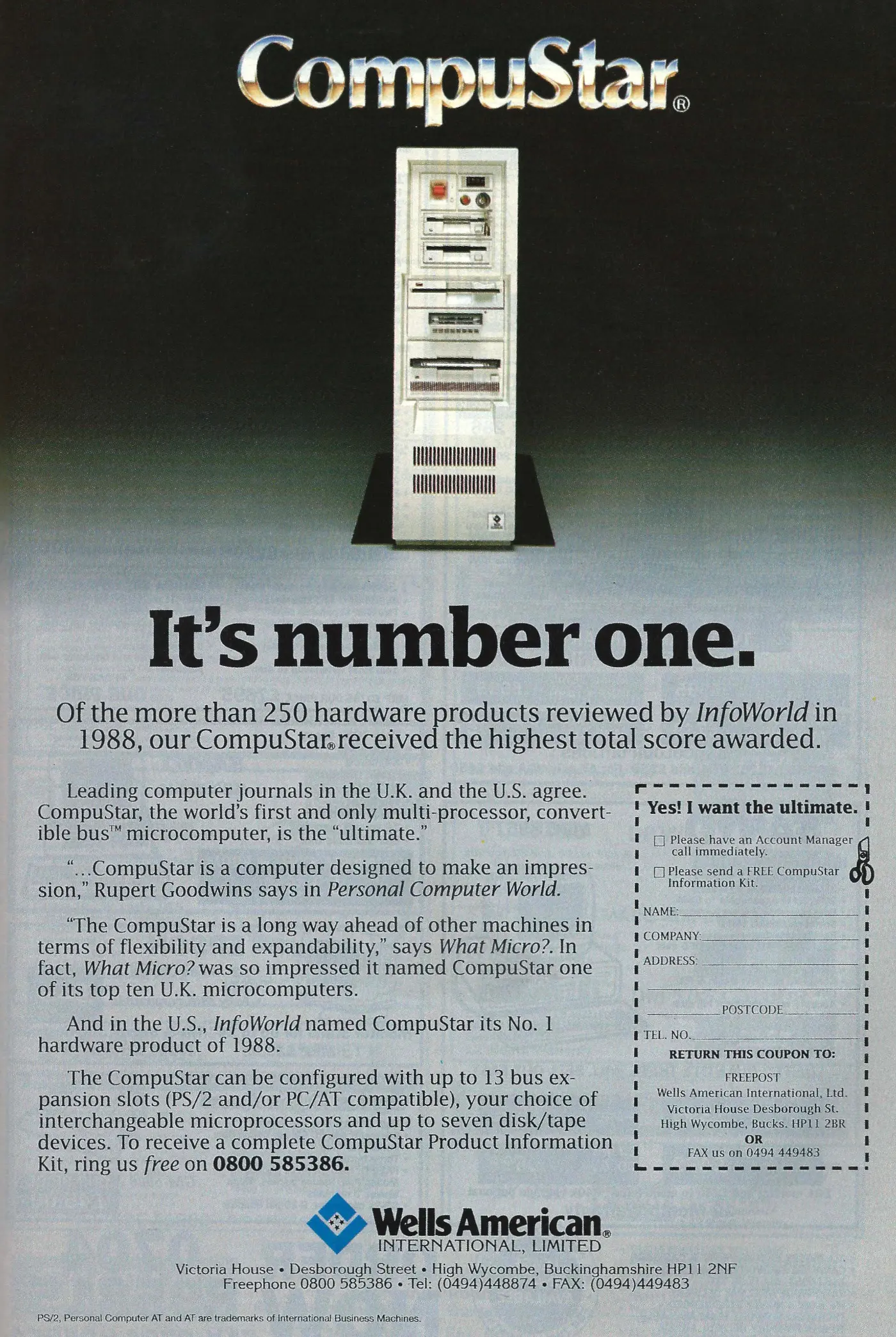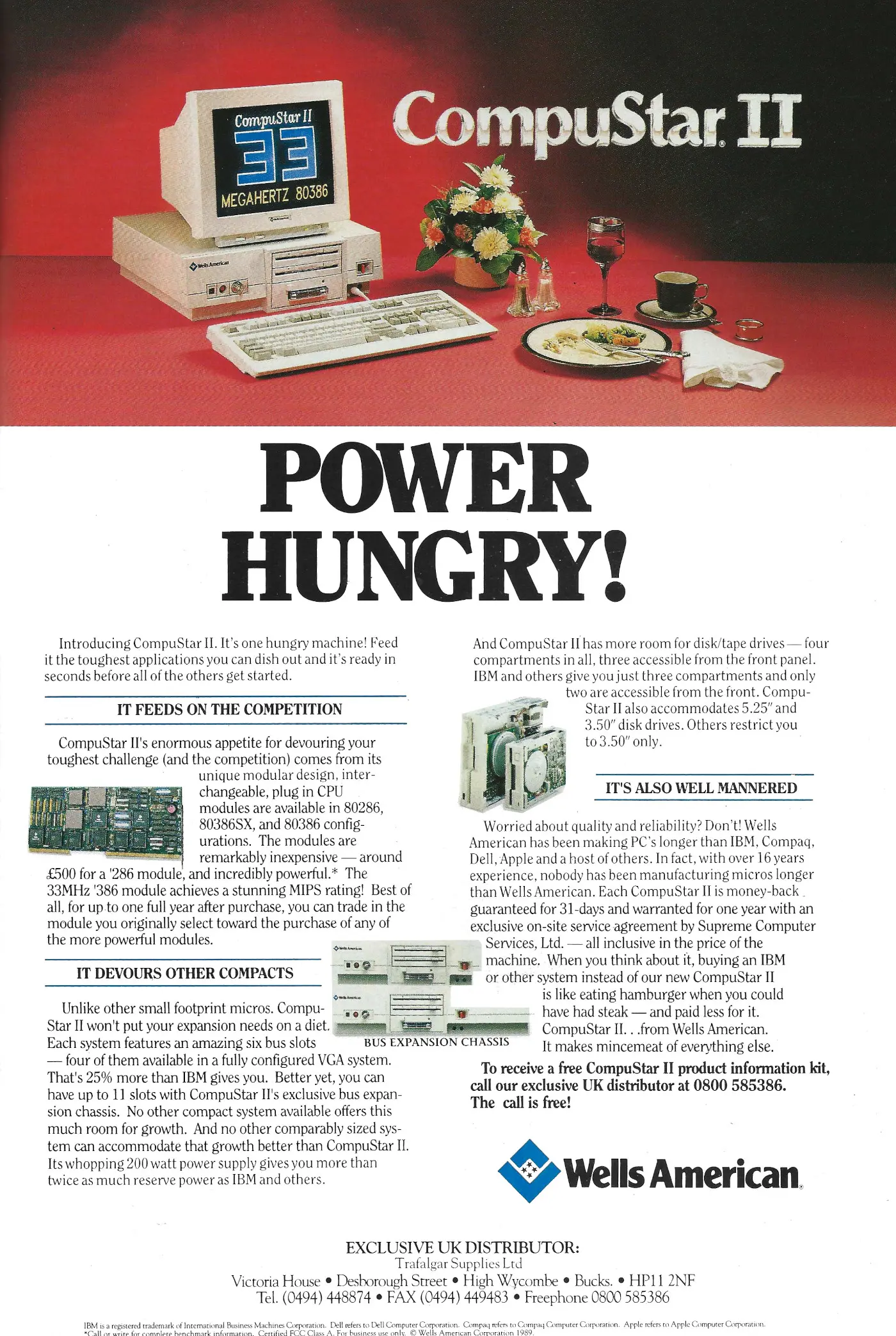
Wells American Advert - July 1989
From Personal Computer World

CompuStar - it's number one
Wells American had started out as Intertec Data Systems, which had been famous in the late 1970s and early 1980s for its Superbrain twin-Z80-based all-in-one micro, which looked a bit like one of the terminals it had been producing previously.
The Superbrain appeared to be one of those slow-and-steady sellers, seemingly everywhere but almost never advertised, at least by Intertec itself. It had been launched in 1979 and was still selling at least up to 1983.
By this time, the company had launched its original CompuStar - a desktop multi-user system that could support up to 255 "intelligent terminals". Unlike many multi-user systems, it didn't centralise its processing, but instead each terminal had its own processor and 64K memory.
The company experienced financial difficulties as it went from $7.9 million profit in 1982 to a loss of nearly $14 million in 1985. This had been largely brought on by the arrival of the IBM PC, which the company evaluated and didn't initially see as a threat.
Ron Wells, brother of Intertec founder William Wells, said of the IBM:
"All of a sudden a whole new industry sprang up. It became obvious that the market wanted a product that was similar to IBM's, only cheaper. Customers wanted the convenience to be able to walk into any computer store and be able to buy software off the wall"

An updated version of the CompuStar - the CompuStar II - in a much more desktop-friendly format, and which was launched towards the end of 1989. It also supported plug-in CPU modules, including an 80286 one for around £500, or £1,670 in 2025. From Personal Computer World, November 1989
In January 1985, the company laid off nearly all of its staff, leaving just 12 employees. It then changed its name to Wells American, partly to capitalise on a "Made in America" campaign that was running at the time, but also to help it diversify by shedding its very computer-specific name[1].
It then released a true IBM compatible - the A-Star - in April 1986, before launching a new CompuStar in 1988. The new machine was particularly interesting as it had a plug-in architecture which could take either the standard AT bus, IBM's new MCA bus, or both at the same time. It was even possible to swap central processors.
An updated machine - CompuStar II - was released towards the end of 1989, but the new machines were not enough, and the company filed for Chapter 7 bankruptcy in 1991.
Date created: 20 February 2024
Last updated: 11 December 2024
Hint: use left and right cursor keys to navigate between adverts.
Sources
Text and otherwise-uncredited photos © nosher.net 2025. Dollar/GBP conversions, where used, assume $1.50 to £1. "Now" prices are calculated dynamically using average RPI per year.